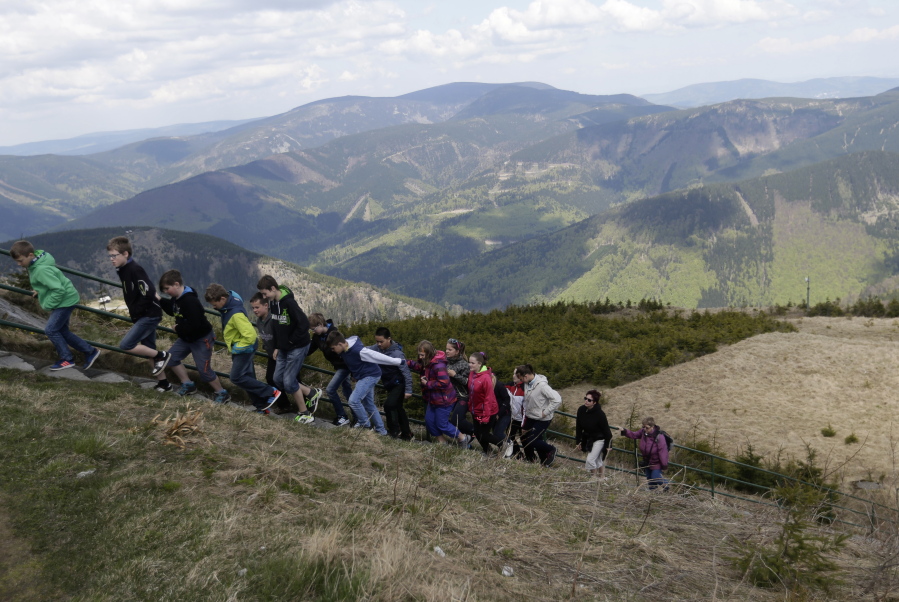DLOUHE STRANE HYDRO PLANT, Czech Republic — Climb a peak at the heart of the Jeseniky mountain range in northeastern Czech Republic and there’s an unexpected reward: As well as a breathtaking view of the surrounding mountains, there is a 37-acre artificial lake that neatly fits the flat top.
With another man-made reservoir more than 1,640 feet below it, it forms a pumped storage power plant — and more recently it has become a major tourist attraction.
The Dlouhe Strane plant’s original function was to balance electricity demands between day and night, but as renewable sources of energy have taken an increasing share of electricity generation, it now contributes to the stabilization of the power grid, which has to cope with the unpredictable output from renewables.
• POPULAR DESTINATION
The plant, conceived in the communist era, was originally fenced in. But after it began operations in 1996 following an 18-year construction period, its owner — the CEZ power company — opened it to visitors.
Today, some 80,000 people a year come to see it, and the millionth visitor is expected this summer.
In a 2005 poll, the Dlouhe Strane plant — named after the hill where the upper lake is located 4,429 feet above sea level — was named one of the seven wonders of the Czech Republic, alongside mostly historical monuments.
To get to the top, visitors can board buses as part of organized guided tours, which includes a trip to the huge underground facility with two turbines.
Another option is to take a ski lift or just use a network of bicycle and hiking routes.
To get down, you can rent a bike and enjoy a 10.6-mile downhill ride on a bitumen road, the longest such track in the country.
• ENERGY STORAGE
Such plants have been built worldwide, including in the United States, Japan and Austria and elsewhere, to serve as a way of storing excess electrical capacity.
In its standard working cycle, 88 million cubic feet of water are pumped from the lower to the upper lake at night, when energy production exceeds demand. During the day, when demand increases, the water flows down through underground tunnels to spin the blades of two 325-megawatt Francis turbines, the biggest in Europe, generating additional electricity.
The pumped storage facilities have another advantage over coal and nuclear plants: they allow a quick start and a fast-changing output. In the case of Dlouhe Strane, it takes only 100 seconds to get from zero to maximum output. In the event of another plant malfunctioning, it can step in rapidly to avoid trouble for the grid.
The turbines are able to generate the maximum output for 5 hours and 15 minutes. In the reverse mode, it takes 7 hours and 15 minutes to pump the water back up to the upper lake.
• NEW FUNCTION
Due to its ability to react quickly, the plant uses its turbines to keep the grid stable despite the numerous renewable power sources.
If the winds blow strongly, the sun shines and wind and solar plants generate too much power, the plant switches to pumping mode even during the day. If the sun goes behind the clouds and the wind dies down, it can get back to generation in a minute.
“This hydro plant is exactly the right power source to cope with those changes,” CEZ spokesman Vladislav Sobol said. “To stabilize the grid is the right role for such plants.”
• THE PLACE TO BE
In the Czech Republic, CEZ operates three such plants, but the others are not in an area of such outstanding natural beauty, in a natural protected reserve. For Jiri Sveda, a senior engineer who has been around since construction began in 1978, it is a dream working environment.
“It’s personal luck for me that I can be here, that I can work here,” he said. “It’s a lifelong win.”




